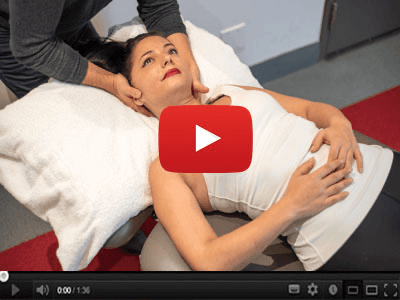4 Rehab Exercises for Piriformis Syndrome (Deep Gluteal Pain Syndrome)
Deep Gluteal Pain Syndrome (DGPS), formerly known as piriformis syndrome, is a distressing condition characterized by discomfort in the buttock area, potentially radiating down the thigh.
Traditionally associated with the piriformis muscle pressing against the sciatic nerve, this syndrome could result in sciatica-like symptoms. However, recent insights have expanded potential aggravators to include muscles and structures beyond just the piriformis, hence the updated terminology.
Begin by using a foam roller to perform soft tissue mobilization on the deep hip rotator muscles.
- Place the foam roller on the ground and sit on it with the affected side.
- Lean towards the non-painful side, placing your arm back for support.
- Gently roll to massage the gluteal and underlying muscles, particularly targeting the deep rotator area.
Note: Ensure the pressure remains therapeutic and not overly painful to avoid irritating the sciatic nerve.
Stretching is vital for alleviating pressure on the sciatic nerve. Here are two variations you can try:
- Lie on your back and bring the knee of the painful leg across to the opposite shoulder.
- Alternatively, try the "figure four" stretch by crossing one leg over the other and pulling both towards your chest.
Strengthening exercises may seem counterintuitive for pain relief but can effectively stabilize the hip joint and alleviate symptoms.
- Wrap a loop band just above your knees.
- On all fours, perform a "hydrant" motion by lifting the painful side out, backward, and then up in rotational motion.
Execute this movement slowly for control and optimal muscle engagement, working towards three sets of 10 to 15 reps per session.
Single leg squats assist in enhancing the strength and balance required for hip stability and reducing sciatic stress.
- Stand on the affected leg, hands on hips.
- Gently bend in a squat position while keeping your trunk leaning slightly forward to actively engage hip extensors and glutes.
Perform until you reach fatigue or onset of discomfort, aiming for approximately three sets of 10 reps each day.
“All exercises are designed to improve the strength, flexibility, and stamina of the gluteal muscles, consequently easing pain.”
Incorporate these focused rehabilitation exercises into your daily routine to manage Deep Gluteal Pain Syndrome effectively. Regular application offers relief and fortifies the supporting muscles around the hip joint. Please share your results or any questions in the comments sections, and stay tuned for more insightful sessions in future videos. Until next time!
From Around The Web
Wellness Inbox is a blog & weekly newsletter that curates trending news and products related to health and wellness from around the web. We also gather content from various sources, including leading health professionals, and deliver it directly to you.
Please note that we may receive compensation if you purchase any products featured in our newsletter. Wellness Inbox is not affiliated with, nor does it endorse, any health professionals whose content may appear in our newsletter. The information provided is for general informational purposes only and should not be considered medical advice.
The information provided is not intended to replace professional medical advice, diagnosis, or treatment. All content, including text, graphics, images, and information available is for general informational purposes only. We do not guarantee the accuracy or completeness of any information presented and assume no liability for any errors or omissions. The content is subject to change without notice. We encourage you to verify any information with other reliable sources and consult your physician regarding any medical conditions or treatments.







